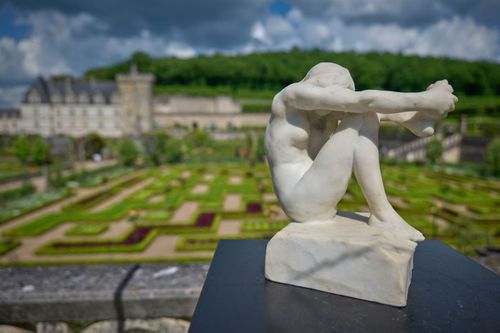Share this @internewscast.com
A sculpture by the renowned French artist Auguste Rodin, which vanished from public sight for nearly 120 years and was believed to be a mere replica, has been auctioned for 860,000 euros ($1.5 million).
Le Desespoir, or Despair, depicting a female figure seated on a rock with one foot held by her knee, was unearthed late last year, having last been sold in 1906, according to a statement from auction house Rouillac.
Rodin, whose life spanned from 1840 to 1917, created multiple iterations of Le Desespoir. This particular piece was conceived in 1890 and carved from marble between 1892 and 1893.

Measuring just 28.5cm by 15cm by 25cm, the sculpture was originally modelled to form part of Rodin’s monumental work The Gates of Hell, which features more than 200 figures and groups.
The previous owners â a family from central France â had no idea of its value and had displayed the sculpture on top of a piano alongside family photos, auctioneer Aymeric Rouillac told CNN on Tuesday.
“They said ‘it’s a fake, it’s a copy,'” Rouillac said, but he decided to investigate further.
The details of this sculpture are striking, Rouillac told CNN.
“The back, the muscles, they are perfect,” he said. “You can feel every vertebra in the spinal column.”

Following his own initial investigation, Rouillac took the sculpture for assessment by the Comite Rodin, which maintains a catalogue of the artist’s work.
On Tuesday, Jerome Le Blay, co-founder of the Comite Rodin, told CNN that he was immediately struck by the “exceptional” piece.
“I realised in a second that it was real,” he said. “I had absolutely no doubt.”
This particular example is “extremely well made,” said Le Blay, adding that it dates back to a period when Rodin was dedicating a huge amount of time to making a small number of sculptures.
Rodin would have worked with assistants who would have carried out the initial work on a piece of marble, before he performed the final stages, he explained.

According to Le Blay, the sculpture dates to “one of the best moments of Rodin’s career,” before his growing fame meant that he started to produce more and more works after the turn of the century.
Upon his death, Rodin left his works to the Musee Rodin in Paris, as well as granting it permission to continue producing his bronze sculptures.
While many of these posthumous bronzes go under the hammer each year, marbles are much harder to find, said Le Blay.
Most of Rodin’s marbles are owned by the Musee Rodin or by other large museums around the world, he said.
“Marbles in private collections are rare,” he said, adding that this piece has a “kind of magic” due to the fact that it has reappeared for sale after such a long time.
Following a “passionate” auction, the winning bid was made by a young banker from the US West Coast, according to the auction house.














